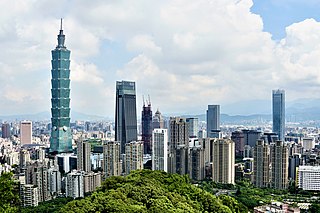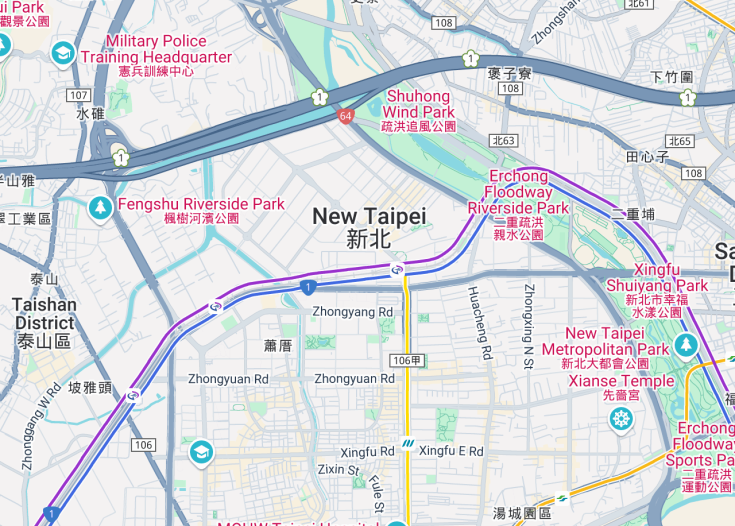New Taipei City, encompassing the area surrounding Taipei City, offers a wealth of cultural, historical, and natural attractions, making it a magnetic point of interest. From its bustling markets and exquisite temples to serene landscapes and coastal sceneries, it stands as a splendid fusion of modernity and tradition.
This vibrant metropolis serves not only as a gateway to Taiwanese culture but also as a center for economic and educational opportunities, drawing both tourists and professionals alike.
When visiting New Taipei, ensure to explore the old street of Jiufen, famous for its teahouses and stunning views of the Pacific Ocean.
For a memorable experience, plan a visit to the Yingge Ceramics Museum to understand the rich pottery heritage of the region.
Top things to do & see in New Taipei
Select the following sights and activities to discover best tickets and tours available in New Taipei.
New Taipei: A Tapestry of Culture and Modernity
| Country | Taiwan |
| Time in New Taipei | GMT+8 |
| Language spoken | Mandarin Chinese |
| Population | 4,051,500 (Source: Statistical Department of New Taipei) |
| Currency | Taiwan New Dollar (NT$ / TWD) |
| Airports |
|
New Taipei, as Taiwan’s most populous city, acts as a vibrant hub incorporating lush green mountains, coastal beauty, and urban sprawl. Historically nurtured by its rivers, this region experienced significant development from small villages to robust towns under various ruling periods.
Today, New Taipei encapsulates a rich tapestry of cultural heritage and modern influences, attracting millions with its historical sites, night markets, and undeniable charm. Museums dedicated to its pottery and tea industries provide deeper insights into its pivotal economic activities through time. Moreover, New Taipei’s coastline offers everything from tranquil beaches to festive boardwalks, making it an all-seasons haven for both residents and international visitors.
Where is New Taipei?
New Taipei surrounds Taiwan’s capital city Taipei, forming a buffer of urban, suburban, and rural landscapes around it, serving as a critical part of the Taipei Metropolitan area.
Distances:
| Route | Distance by car | Time by car |
|---|---|---|
| Taipei to New Taipei | 10 miles (16 km) | 30 minutes |
| Taoyuan to New Taipei | 32 miles (52 km) | 50 minutes |
| Hsinchu to New Taipei | 52 miles (84 km) | 1 hour 20 minutes |
What is New Taipei famous for?
New Taipei is famed for its diverse landscapes that combine urban buzz with serene natural sites. It’s known for Jiufen’s enchanting streets, the historical Lin Family Mansion, and the bustling Tamsui Old Street, home to food stalls and cultural performances.
History
Prehistoric Times to Early Settlements
The history of what is now known as New Taipei City traces back to prehistoric times. Archaeological evidence suggests the presence of Austronesian peoples, who formed the foundation of the indigenous population. Over time, various tribes and settlements flourished across the region, living primarily along the fertile river valleys and coastal areas.
1626-1895: Dutch and Qing Rule
The modern history of New Taipei began in the 17th century when the area came under the control of the Dutch East India Company. However, the Dutch were soon expelled by the Spanish, who established their rule until the arrival of the Qing dynasty in 1683. Under the Qing, the area experienced significant growth and development. Agriculture, particularly rice and tea cultivation, became the backbone of the local economy, supporting a growing population.
1895-1945: Japanese Occupation
In 1895, Taiwan was ceded to Japan after the First Sino-Japanese War. During this period, New Taipei, like the rest of Taiwan, underwent major transformation. The Japanese introduced a number of modernization projects, including extensive rail networks and industrial infrastructure, significantly altering the social and economic landscape of the region. The Japanese also promoted cultural assimilation policies, impacting local customs and traditions.
1945-Present: Economic Growth and Urbanization
Following the end of World War II, New Taipei became a part of the newly established Republic of China. The subsequent decades were marked by rapid industrialization and urbanization, propelling New Taipei into a primarily urban and industrial region. The city has become vital in various sectors including manufacturing, finance, and commerce, and continues to expand its cultural and economic influence both locally and internationally.
Visit New Taipei
Exploring the Charm of New Taipei
New Taipei City offers a plethora of attractions and activities, making it an exciting destination for travelers. Explore the historic village of Jiufen, renowned for its old-world charm and tea houses.
Visit the dramatic coastlines and rock formations at Yehliu Geopark, or hike the lush trails of Yangmingshan National Park. For arts and culture, the Museum of Contemporary Art New Taipei must not be missed. Don’t forget to check out:
- Fort Santo Domingo – A historical landmark reflecting the past European influences.
- Bitan Scenic Area – Ideal for outdoor activities such as boating and hiking.
- Banqiao District – Known for its vibrant night markets and shopping districts.
Festivals and Events
New Taipei City is vibrant with various annual festivals and events that celebrate its rich culture and traditions. Notable among these are the Pingxi Sky Lantern Festival, typically held in February, where thousands of sky lanterns light up the night sky in a breathtaking display. The Yehliu Geopark Ocean Festival in summer celebrates marine life conservation with educational and fun activities.
Best time to visit New Taipei
The optimal time to visit New Taipei is during autumn, particularly from October to November, when the weather is comfortably cool, and the rainfall is minimal, making it ideal for outdoor activities and exploring the city’s numerous attractions.
is New Taipei worth visiting?
New Taipei City, with its rich tapestry of history, culture, and modernity, offers a compelling destination for travelers. The city’s varied landscape, from mountains and hot springs to urban centers, caters to a wide range of interests.
However, given its extensive urban spread, first-time visitors might find navigation challenging. Despite this, the effort to explore New Taipei is rewarded with a deeper understanding of Taiwan’s dynamic cultural and historical significance, making it certainly worth a visit.










